Loch Ness Regional WTW (2019)
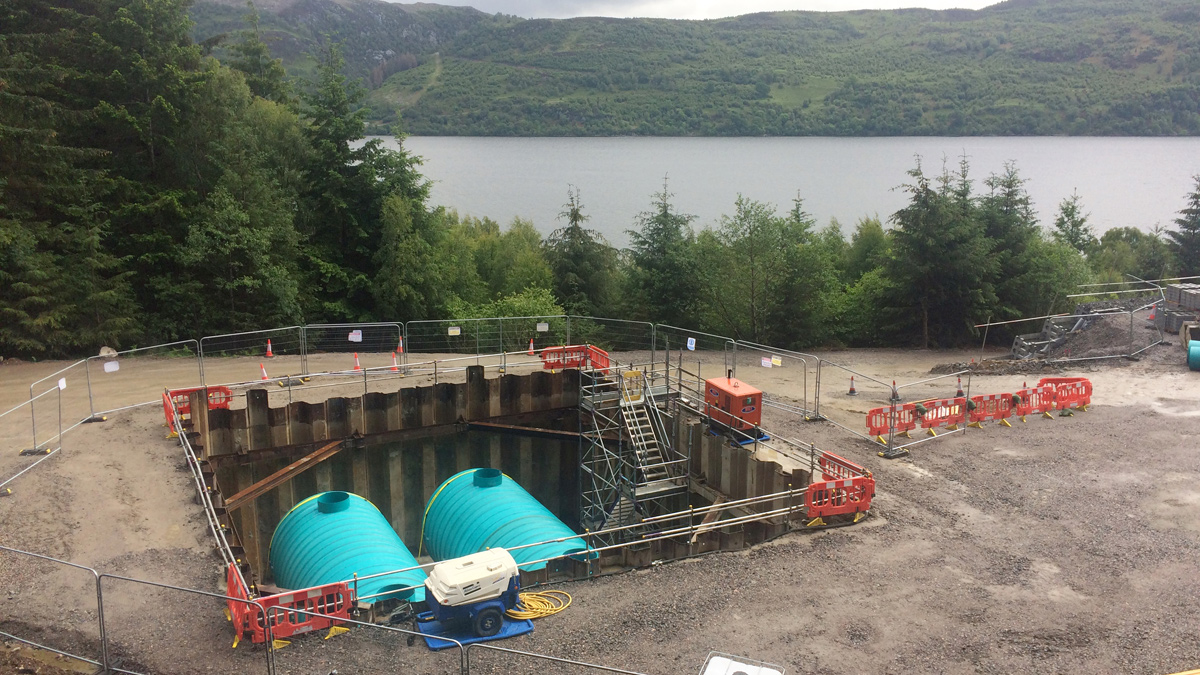
Construction progress and excavation for twin chemical waste tanks - Courtesy of ESD
Loch Ness Regional is a new multi-site £22m water treatment works and infrastructure project for Scottish Water improving the water supply to their customers from the villages of Fort Augustus and Invermoriston, both to the south of Inverness. Located on the banks of Loch Ness, the project’s objective is to improve the treatment of water to the customers of these villages. There are current operational challenges at two existing works and to secure a long-term supply of clean, safe and fresh tasting water that takes account of summer peak demands and projected growth within the area, a single source of water from Loch Ness will be utilised.
Undertakings/project scope
The project is being delivered by ESD; a Binnies, MWH Treatment and Galliford Try Joint Venture formed in order to manage, design and deliver Scottish Water’s Q&SIV Non Infrastructure Programme. The design of the project is being undertaken by Binnies.
The main components comprise:
- Raw water intake including submersible pumping station.
- Raw water pipeline.
- 1M l/d NF membrane package.
- Pumped/gravity distribution main.
- Clear water tanks (CWT).
- Network booster pumping stations.
A summary of the construction works being undertaken including design and process considerations as well as some of the challenges encountered for these main components is given below.
Raw water intake and rising main
Marine works: The new intake includes marine works within Loch Ness itself with inclusion of an intake structure and automated end of pipe screening system as well as 75m of pipeline installed on the bed of the Loch. The pipe will be welded on-land and floated into place using a water ballast and concrete collars to position in place and support on the bed of the Loch.
To limit construction within the Loch a solution was developed utilising rock-filled polypropylene mesh bags to form the main intake structure to support the screen unit. The main benefit of this was to remove the need for any under water concrete pours while ensure a suitably robust solution which would meet the required design life criteria.
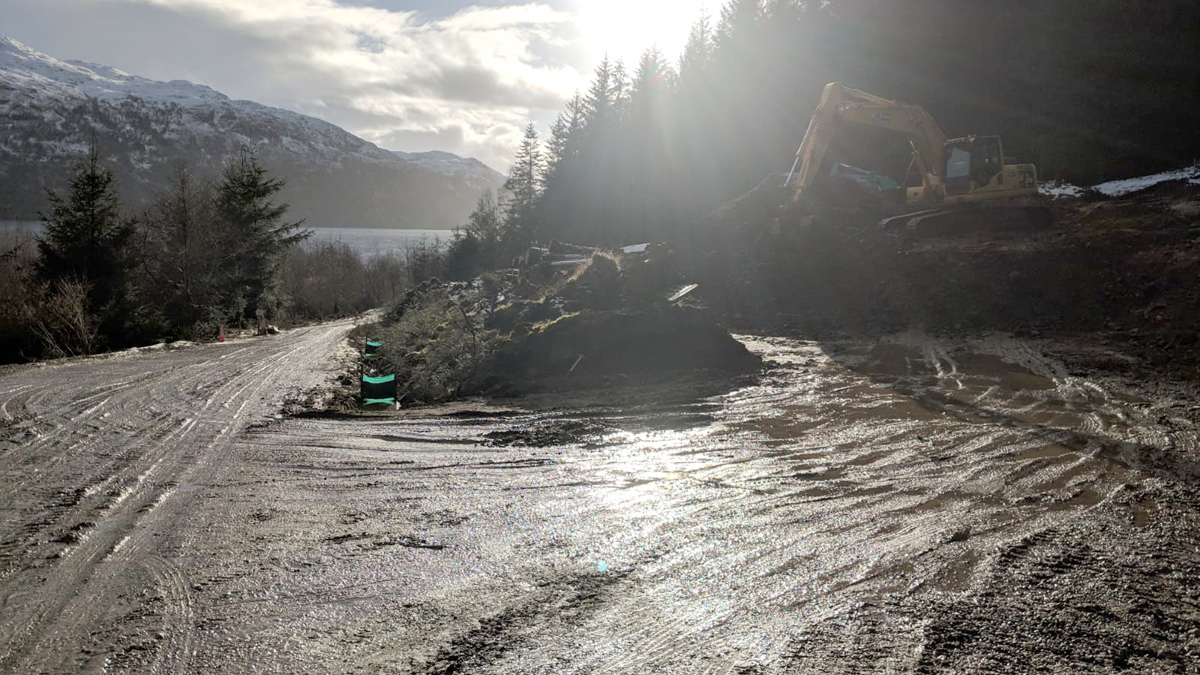
Main WTW site with Loch Ness in background – Courtesy of ESD
The intake and pipe will be installed within Loch Ness using a barge with divers being utilised to install an end of pipe cleaning system. The cleaning system will be an air burst backwash type screen. The screen will use an inner purging system that at pre-determined intervals, or manually if needed, backwashes the intake screen through an innovative progressive velocity flow distributor which maintains the flow rate within the intake screen from the source.
On-land works: The on-land works will include the installation of a submersible pumping station using a caisson top down construction method. The rising main from here feeding the new WTW will be installed using HDD technique to cross the A82 local to the intake and then feed up to the WTW approximately 1km from the intake.
Using specialist in-house design expertise and SW Specialist Services detailed assessments were made of the optimum intake positioning within the Loch taking account of navigational interfaces, wave/current actions, pollution risks, geotechnical considerations as well as fisheries and soci-economic impact assessments.
Water treatment works
The new works will have capacity to produce up to 1 million litres of drinking water per day and will be supplied by an abundant source of raw water from Loch Ness. Within the treatment works site, as well as the new WTW building, inclusion will be made for a new clear water tank and associated infrastructure.
The new WTW will be assembled and commissioned at a specialised factory in Muir of Ord, before delivery to the site. The new WTW building will be assembled as a modular construction with the design allowing the building to be split for transportation to site by road and then quickly reassembled once delivered to site.
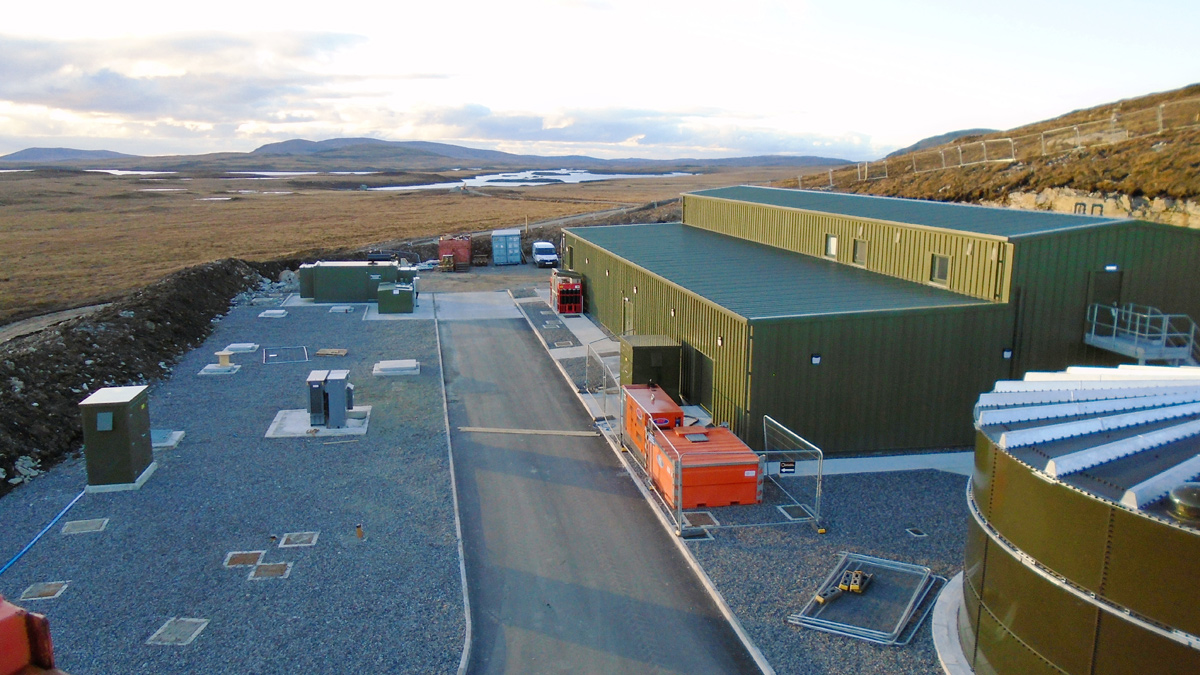
Example of a modular WTW treatment building of similar size – Courtesy of ESD/RSE
Off-site construction allows for significant programme efficiencies to be made of upwards of 6 months in both construction and commissioning.
The plant is the sister plant to Loch Ness and has achieved the distinction of ‘Design for Manufacture and Assembly Award’ at the Water Industry Awards 2019.
Nano-filtration membranes, the heart of the main treatment process, involves passing the raw water through a series of membranes which filter out larger organic compounds while allowing clean water molecules to pass through very fine pores. The water that has passed through the membranes is then treated further to ensure that it meets customers’ expectations at the tap.
The new WTW will use a process called chloramination to remove any micro-organisms present. This is a change from simple chlorination which is currently used. Chloramination is already used to provide safe drinking water to over 1 million customers across Scotland, including in Inverness, Fort William, Kyle of Lochalsh, Aberdeen and Edinburgh.
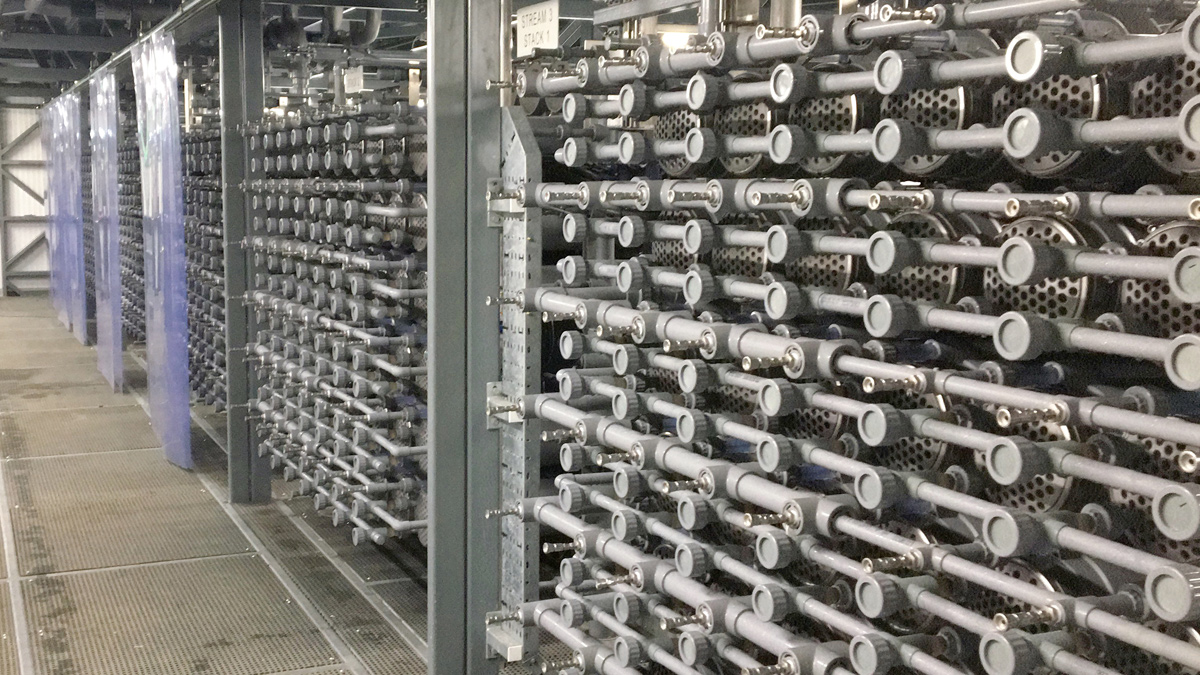
Nano-filtration membrane modules – Courtesy of ESD/RSE
Civil 3D
The WTW is installed within a forest area above the Inverness to Fort William trunk road and adjacent to the Great Glen Way, a year round widely walked tourist route spanning 125km between Inverness in the north to Fort William in the south. The WTW area was to be positioned within a parcel of land surrounded by mature trees and on a complex topography.
With the number of interfaces, change was inevitable through project development. This was recognised early in the project execution planning and a decision was made to invest in the utilisation of Civil 3D.
All site areas benefited from the use of Civil 3D with one of the main examples being the WTW. The use of Civil 3D allowed the project designers to quickly and accurately visualise and understand the land topography. This knowledge in turn allowed:
- Quickly adapt layouts to accommodate changes and developments as the design progressed.
- Make significant savings to the retainment structures and allowed removal of crib wall structures.
- Set site levels and profiles to minimise cut and fill volumes to limit the quantity of material removed from site.
- Assist with the planning application process and allowed 3rd parties to quickly appreciate the layouts and visual impact of the works.
- Interface Civil 3D with Revit further enhance our design offering.
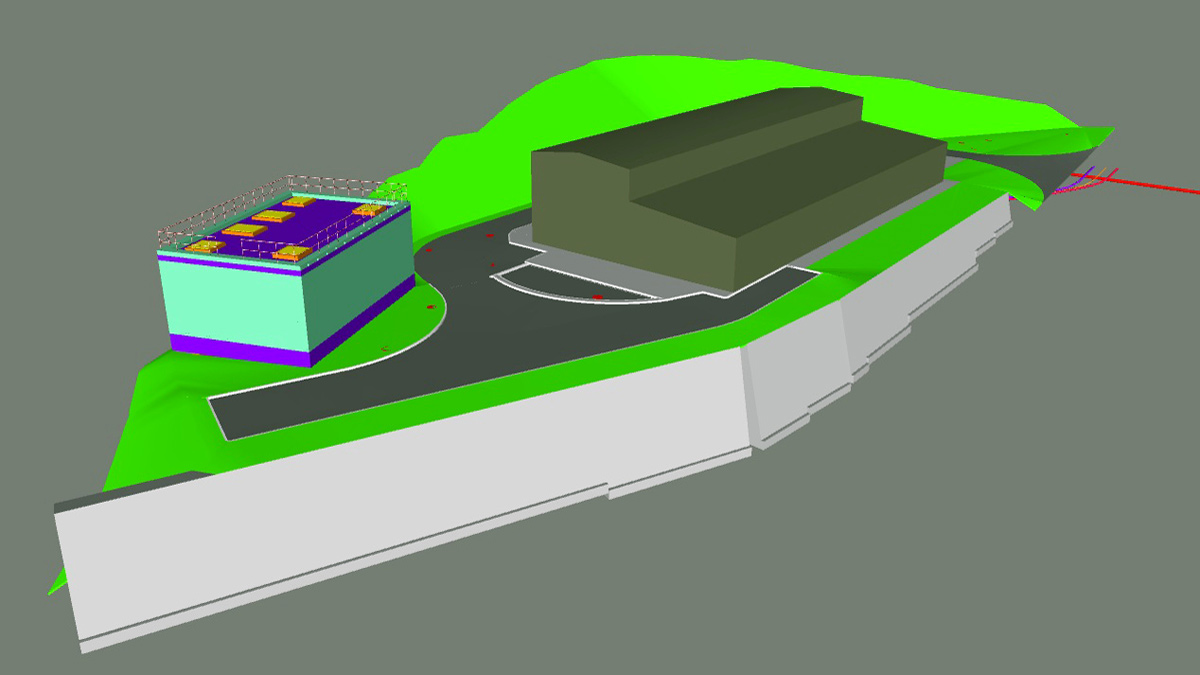
WTW modelled using Civil 3D – Courtesy of ESD
The impact and value of being able to visualise challenging site conditions, and to improve upon accepted designs relatively late in the project, cannot be over-emphasised. The use of Civil 3D on the Ness Regional WTW Project encouraged the whole project team to collaborate around reducing risks associated with temporary works, and in the process has produced a simpler, faster, lower risk and lower cost earthworks solution.
The rear slope stabilisation and front retaining wall both were developed in conjunction with the 3D model.
New pumped/gravity distribution main
The treated water produced at the WTW is pumped to a new service reservoir at Fort Augustus (a distance of around 8km) and a service reservoir at Invermoriston. The pipeline route to Fort Augustus has been designed to follow the Great Glen Way track on the hillside above the main trunk road between Fort William and Inverness. Engagement with Forestry Commission Scotland, Highland Council and stakeholders with assistance of SW Specialist Services has ensured construction has been possible while minimising disruption to users of the Great Glen Way.
Extensive traffic management plans were required to be put in place to allow this to start. Running such a distance has provided the additional challenge of multiple bridge and culvert crossings.
Distribution from the new SR will be by gravity into the village of Fort Augustus. The new gravity main connects the new storage tank north of the village to the existing network. Included within these works has been local network improvements to replace aging assets with new. The new infrastructure designed to link with the existing local water networks in Fort Augustus.
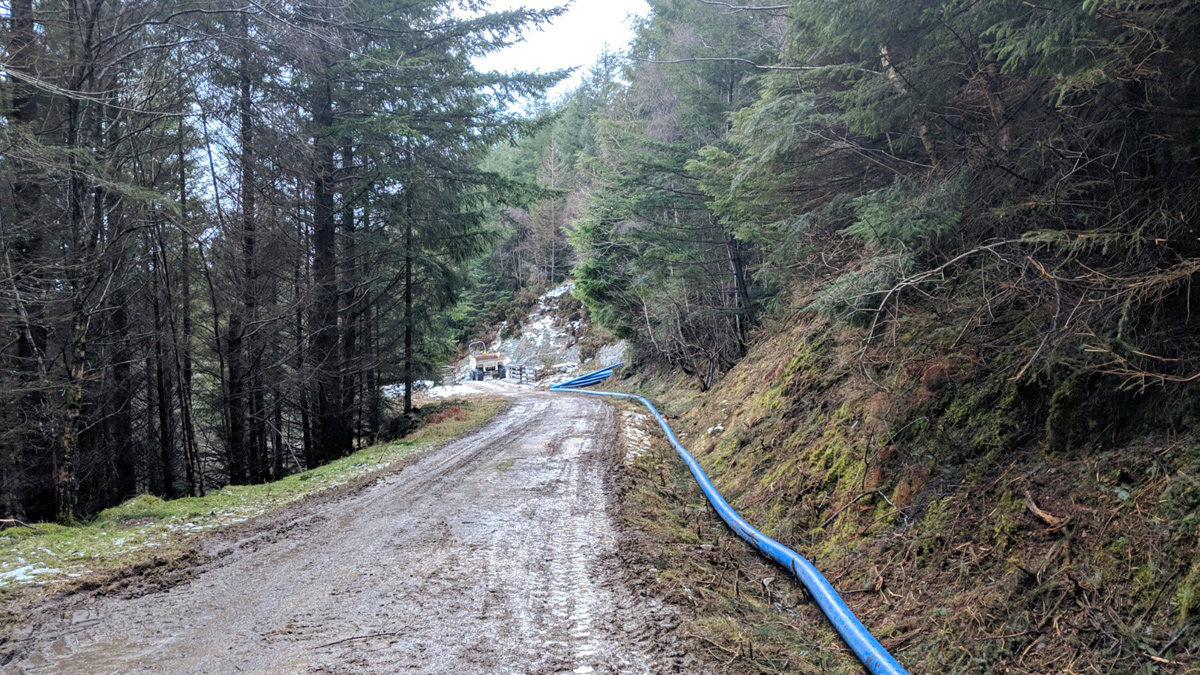
Installation of pipeline along Great Glen Way – Courtesy of ESD
This work included the challenge of new drilled crossings beneath the River Oich and Caledonian Canal. Again working closely with SW and the Stakeholders and using horizontal directional drilling and pipe boring the crossings will enable the distribution pipes to run securely beneath the canal and rivers without disturbance to them.
New clear water tanks
A new Service Reservoir will be constructed on the hillside near the village of Fort Augustus. Additional water storage capacity would also be created at Scottish Water’s current WTW site in Invermoriston, ensuring improved security of supply for customers in local communities. Construction will include a new access track, bridge crossing and associated feed and discharge pipelines.
New network booster pumping stations
With Fort Augustus sitting in a valley additional booster pumping to the east site of the village was required. This included a new 4km pumped water main as well as the two pumping stations to maintain supply to a number of customers.
In order to keep disruption to the road surface to a minimum the new water main will be installed using slip-lining, which involves feeding the new smaller pipe into the existing larger pipe. The booster stations, like the new WTW, will be fabricated and tested off site.
Current status
Construction progress continues on site at present with much of the pipelines in place and formation groundworks for the WTW completed. The main structures are due to be installed, including the installation of the WTW, during late 2019 with testing/commissioning and eventual water in service by the end of 2020.
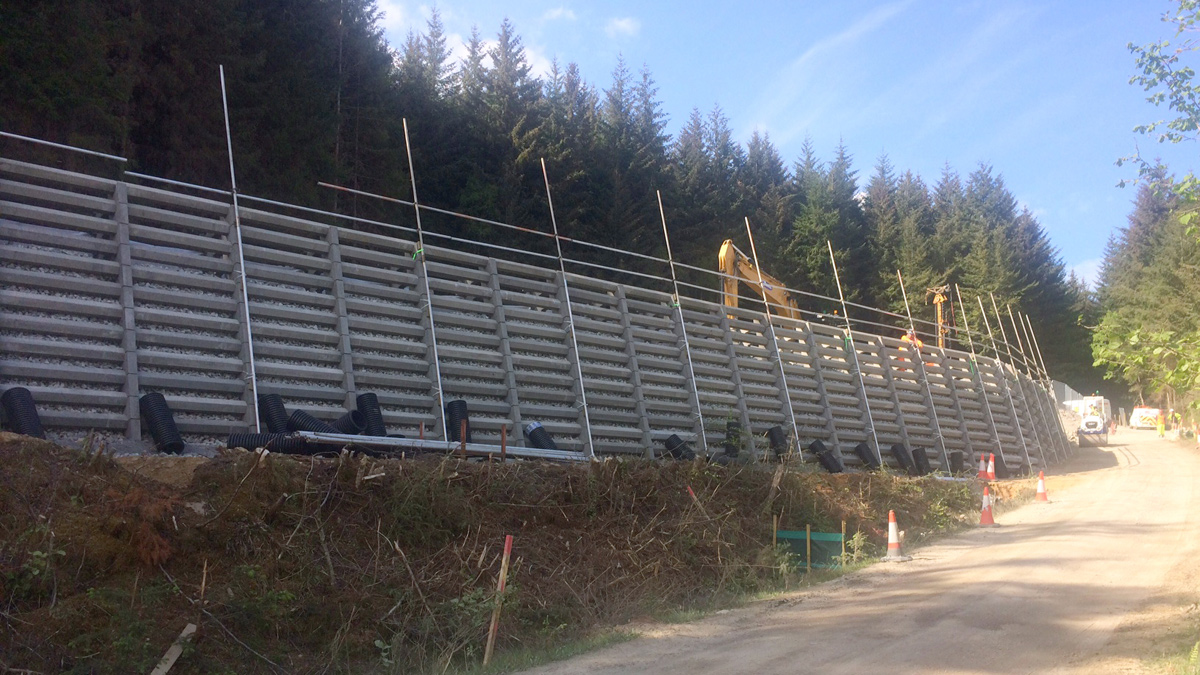
Retaining crib-wall to the front of the site – Courtesy of ESD
Conclusions
This case study has highlighted the benefits of off-site manufacture and use of Civil 3D, enabling efficiencies to be made in both design and ultimately in construction.
The complexity of project interfaces and sensitivity of the site has also been greatly enhanced by working in collaboration with Scottish Water. ESD, together with Scottish Water, have successfully managed to navigate a path through all planning, land purchase, regulatory approvals as well as the maintenance of a right of way in one of the most popular tourist destinations in Scotland.







